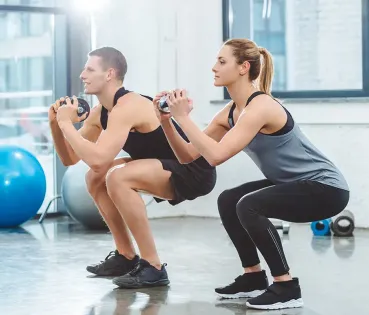
The importance of pelvic floor training (at any age)
The pelvic floor is a set of muscles that can lose strength with age, leading to significant problems, such as incontinence or impaired sexual health.
The pelvic floor is still unfamiliar for many people, despite the visibility it has gained in recent years. This is a set of muscles of vital importance for a woman's well-being, responsible for supporting the uterus, bladder, urethra, vagina and rectum. And, unfortunately, although it should be trained regularly, women often don't do so until they reach prepartum, postpartum or menopause.
How to locate your pelvic floor?
It’s in the lower part of the pelvis and forms a hammock-shaped structure that supports your organs. To locate it, tighten the muscles you use to urinate. You should feel those muscles contract as you do so. To make sure you are not contracting your buttocks or any leg muscles, place your hands under your buttocks. You should not feel your body rising.
Kegel exercises: a beginners' manual
Named after Dr Arnold Kegel, a pioneer in pelvic floor health, these are very easy and discreet exercises that can be practised anywhere, at any time of the day.
- Make yourself comfortable: the first thing is to find the position that works for you. If it's your first time, you can try sitting or lying down.
- Contract, hold, rest: try to hold for 3 to 6 seconds. It will be difficult at first, but as you practice, you will be able to hold that contraction longer.
Repeat this movement: perform this exercise at 10-second intervals to allow the muscle to rest. It is advisable to do this at least three times a day.
Toning and strengthening your pelvic floor
Toning and strengthening your pelvic floor are not the same thing and it is recommended that you train both aspects in your exercise routine. Whereas with the former you work with relaxed muscles, the latter training involves tightening.
The best option is to work with vaginal weights and gradually increase their heft. Once they have been inserted, you should use your pelvic floor muscles to keep them from falling due to gravity.
To strengthen your pelvic floor, we recommend you try using Kegel balls. All you have to do is insert them and go about your normal routines: at home, out and about, on your way to work. These balls generate vibrations that stimulate the pelvic floor nerves, causing them to contract on their own.
At what point should exercise frequency be increased?
As with any exercise, that will depend on the physical condition and age of each person. We recommend not moving on to more difficult exercises until you find it easy to contract these muscles for 6 seconds, for 10 repetitions.
Ultimately, it is very important and easy to train this set of muscles, either with Kegel exercises or with the help of devices designed for this purpose. Invest 15 minutes a day and you will start noticing the health benefits right away.




